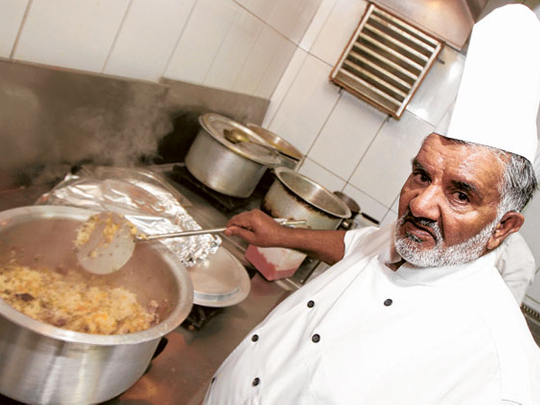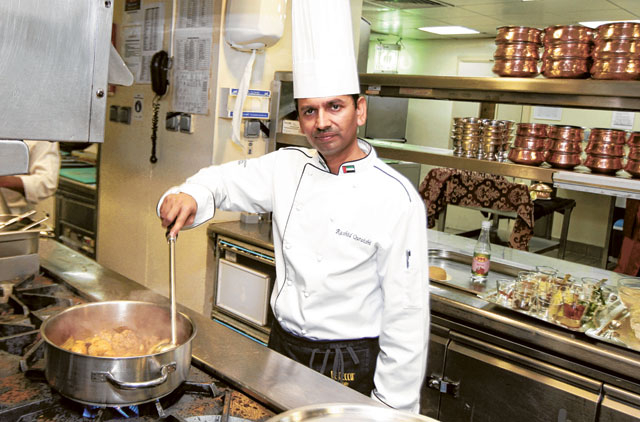
Dubai: It would make one tough ‘Spot the Difference' game had we to juxtapose the Indian and Pakistani biryanis. At first glance, the two versions will look similar. The rice, fluffed and dewy in each grain. The colours, bursting into a spectrum of savoury hues. The spices, some whole, others barely visible, hinting at its aroma.
Back to what makes them different. Can you tell the two apart? To better understand the characteristics of each, Gulf News spoke to Dubai-based Akthar Ali, Pakistani head chef at Barbecue Delights, and Rasheed Quraishi, Indian master chef at Handi, Taj Palace Hotel.
Gulf News: How would you characterise your country's biryani?
Chef Ali: It is almost considered a national dish, given that it is cooked for festivals and celebrations.
We make different varieties including the popular Sindhi, Memoni and Hyderabadi. Typically we make chicken biryani. We also make mutton, fish and prawn variations.
We mostly cook the rice and the meat separately, and then layer.
Chef Quraishi: A perfect Indian biryani is flavoured with the right balance of masala [spices].
The rice, usually basmati, is cooked al dente — each grain perfectly fluffy and separate.
It is a complete, sumptuous meal fit for a king.
An Indian biryani has three steps — preparation of yakhni [meat gravy], cooking rice, and layering of yakhni and rice.
Biryani is said to have originated from Iran. Trace the journey to your country.
Chef Ali: It was brought by Iranian merchants and travellers. It was developed further in Moghul courts, and soon had local versions. These versions were spicier and often reflected the tastes and preferences of different regions and communities.
Chef Quraishi: Yes, it originated from Iran, and used to be called ‘Birian'. In India, it is referred to as biryani.
Even dum pukht or slow oven cooking has its origins in Iranian cuisine in which a dish was sealed and buried in hot sand. Once it was introduced in India, specifically in Lucknow [formerly part of Awadh], now the capital of Indian state Uttar Pradesh, it was adopted in Hyderabad and Kashmir, under royal patronage.
Though the basic cooking style remained the same, regional flavours varied its taste. If the kitchen of Lucknow used raita [condiment made with yogurt] as a side dish, the cooks in Hyderabad served it with side dishes made with pomegranate, amchur [dried mango powder] and tamarind.
What are the main spices used?
Chef Ali: Cloves, cardamom, cinnamon, dried plum, bay leaf, and saffron.
Chef Quraishi: Green cardamom, mace, bay leaves, saffron, cloves and nutmeg.
What are the different variations available in Dubai?
Chef Ali: A Pakistani favourite is the Sindhi version which is spicy and is prepared with meat and potatoes. It can also be prepared with fish and shrimp. Memoni biryani made with yoghurt has a tangier flavour. Plus, we have Kachchi biryani style in which we cook raw marinated meat along with the rice.
Chef Quraishi: Hyderabadi, Lucknowi, Moradabadi, Calcutta, Sindhi and Malabar biryanis are popular.
Name the most popular version at Dubai restaurants?
Chef Ali: Our restaurant offers a version of Sindhi biryani which is the most popular biryani in Pakistan. Our restaurant version is less spicy because we cater to our Arab and Western clientele. However, we prepare spicier varieties on order.
Chef Quraishi: Almost every kind of biryani is available with the Hyderbadi and Lucknowi versions topping the popularity list.













